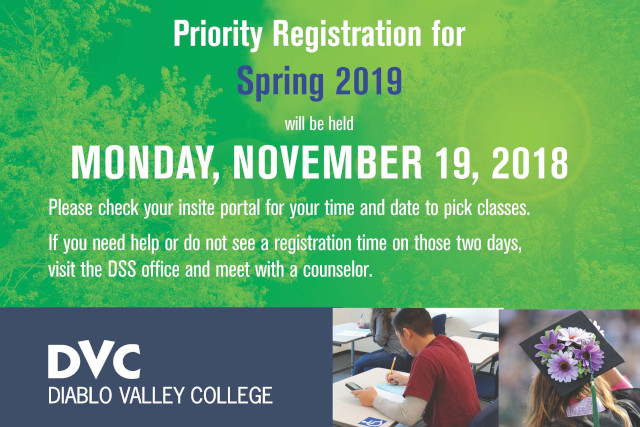A story of missteps, false starts, natural disasters, and persistence
By David Hagerty, Manager, Disability Support Services, Diablo Valley College
Does this sound familiar: it’s the first week of school and students are running madly across campus (or sending a flurry of emails in the current online context) trying to get into classes. During a reprieve, you pause to wonder why all these people were unable to get the schedule they wanted when most received priority registration.
This was a scene I witnessed every semester for 14 years while teaching educational assistance classes at Sacramento City College. When I became the manager of Disability Support Services at Diablo Valley College, I decided to find out why.
First, I investigated who received PR at DVC. I found that the vast majority of DSS students did, which in my view complies with the intent of the law:
66025.91. Each community college district, with respect to each campus in its jurisdiction that administers a priority enrollment system, shall grant priority registration for enrollment to students in the Community College Extended Opportunity Programs and Services program, pursuant to Article 8 (commencing with Section 69640) of Chapter 2 of Part 42, and disabled students, within the meaning of the federal Americans with Disabilities Act of 1990 (42 U.S.C. Sec. 12101 et seq.), who are determined to be eligible for disabled student programs and services pursuant to Chapter 14.
Then I checked to see how many of them used it. What I learned disappointed me. In spring of 2017, only 32% of eligible DSS students registered during the three days of PR. That explained the mad rush for classes, but not why they’d pass up such a great benefit.
I’ve often joked that if I could sell PR on the quad, I could retire rich and young(er). Instead, I give it to students who fail to capitalize.
I realize that many college students do not use all their disability accommodations, but I view PR as a key component to college success. So much depends on DSS students finding the right course, right instructor, right time of day, etc. I also see PR as one tool in complying with several statewide initiatives, including AB 705, Guided Pathways, and shortening the path to completion.
Thus, for fall of 2017, I started a campaign to promote its use. After talking to my colleagues, I tried several techniques:
- Mass email reminders
- Sandwich boards around campus, esp. by parking lots
- A pizza party on the days of priority reg.
To say I was disappointed with the outcome is an understatement. Despite my efforts, in fall 2017 only 29% of eligible students registered during those golden three days, worse than without my campaign.
Teaching had taught me the importance of repeating the same message through multiple modalities, so I spoke to our college’s marketing director. I asked about:
- Social media
- Text messages
- Other high-tech ideas
She suggested good old-fashioned post cards.
Still skeptical, I created one and mailed it to the homes of all DSS students two weeks prior to the first day of PR. Much to my surprise, it worked.
For spring of 2018, PR usage jumped to 47% of eligible students. This may not sound terribly high, but it includes people who never registered that following term (and who I could not exclude from my stats).
My office staff also did all they could to qualify more people. For example, we emailed everyone who was missing 3SP steps and everyone on probation or dismissal, explaining how to regain priority reg. In the two weeks prior to that first day, we saw about 100 students and helped them clear up these issues.
Since then, we’ve continued to send post cards to DSS (and more recently EOPS) students one week prior to PR. I also send three emails (2 weeks before, 1 week before, the first day of).
Before the campus closure due to COVID, we wallpapered the office with fliers about PR, then created a large banner that hung above our front desk, advertising the dates.
Our usage rates have vacillated between 40-55% in semesters since then, despite all manner of interference, including fires and plagues. (The one exception was a term when our registration system broke on those two days – no good work around for that.)
In spring of 2020, when my campus closed due to COVID restrictions, I could not create a postcard and used text messages instead. The usage rate fell modestly to 42%. The following term, even with all student services remaining online, I resumed sending post cards. The rate rose to 52%.
Thus, the most important tool we use is the postcard home. My staff believe that’s because it alerts parents, who nudge their adult children. I don’t have evidence to either support or refute that belief. Regardless, 21st century technologies have yet to outperform those of the 19th and 20th…
All of which proves a couple things: you can influence your students’ behavior around registration, and you don’t need the latest tech tools to do it. However, it takes a concerted effort by your staff and messaging through multiple platforms.

| Used PR | Eligible | % | Notes | ||||
| SP 17 | 603 | 1864 | 32% | ||||
| FA 17 | 428 | 1484 | 29% | first attempt | |||
| SP 18 | 675 | 1430 | 47% | added post cards | |||
| FA 18 | 514 | 1168 | 44% | ||||
| SP 19 | 561 | 1370 | 41% | campus closed due to fires | |||
| FA 19 | 401 | 1069 | 38% | many problems with online reg | |||
| SP 20 | 746 | 1507 | 54% | added banner | |||
| FA20 | 546 | 1469 | 42% | remote – added text in lieu of cards | |||
| SP 21 | 732 | 1420 | 52% | remote – both text and post cards |
